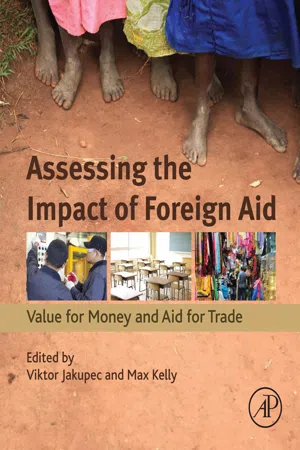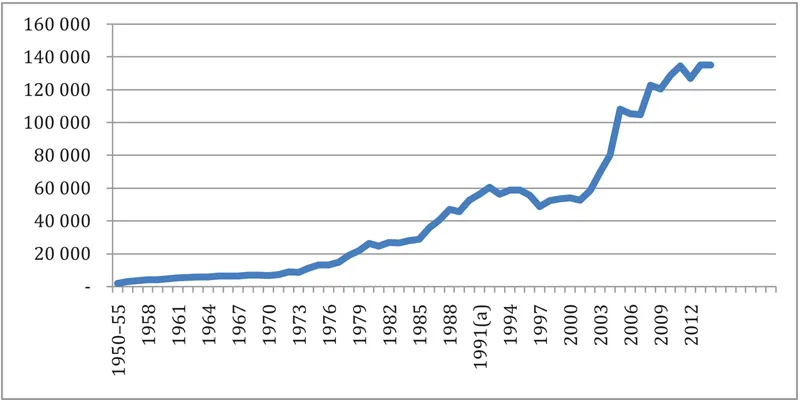
Assessing the Impact of Foreign Aid
Value for Money and Aid for Trade
- 272 pages
- English
- ePUB (mobile friendly)
- Available on iOS & Android
About This Book
Assessing the Impact of Foreign Aid: Value for Money and Aid for Trade provides updated information on how to improve foreign aid programs, exploring the concept and practice of impact assessment within the sometimes-unproblematic approaches advocated in current literature of value for money and aid for trade.
Contributors from multi-lateral agencies and NGOs discuss the changing patterns of Official Development Assistance and their effects on impact assessment, providing theoretical, political, structural, methodological, and practical frameworks, discussions, and a theory-practice nexus.
With twin foci of economics and policy this book raises the potential for making sophisticated and coherent decisions on aid allocation to developing countries.
- Addresses the impact of aid for trade and value for money, rather than its implementation
- Discusses the changing patterns of Official Development Assistance and their effects on impact assessment, providing theoretical, political, structural, methodological, and practical frameworks, discussions, and a theory-practice nexus
- Assesses the effects and implications of the value for money and aid for trade agendas
- Highlights economic issues
Frequently asked questions
Information
Official development assistance and impact assessment – theoretical and practical frameworks
* School of Education, Faculty of Arts and Education, Deakin University, Warrnambool, Australia
† School of Humanities and Social Sciences, Faculty of Arts and Education, Deakin University, Warrnambool, Australia
Abstract
Keywords
Introduction
Aid, ODA, and resource flows to the developing world

Table of contents
- Cover
- Title page
- Table of Contents
- Copyright
- List of Contributors
- Author Biographies
- Preface
- Chapter 1: Official development assistance and impact assessment – theoretical and practical frameworks
- Chapter 2: Conceptualizing impact assessment in foreign aid
- Chapter 3: Competing development paradigms and alternative evaluations of aid effectiveness: challenging the dominant neoliberal vision
- Chapter 4: Aid for trade: a critical analysis
- Chapter 5: The rhetoric and reality of results and impact assessment in donor agencies: a practitioners’ perspective
- Chapter 6: Beyond aid distribution: aid effectiveness, neoliberal and neostructural reforms in pacific island countries
- Chapter 7: Regulatory impact assessment: the forgotten agenda in ODA
- Chapter 8: Can we assess the overall impact of development agencies? The example of corporate results frameworks in multilateral development banks
- Chapter 9: Assessing the impact of knowledge on development partners
- Chapter 10: From evidence to action: stakeholder coordination as a determinant of evaluation use
- Chapter 11: Inside the black box: modeling the inner workings of social development programs
- Chapter 12: Impact assessment and official development assistance: ethnographic research of the World Bank’s community-based rural development projects in Ghana
- Chapter 13: Finding balance: Improving monitoring to improve impact assessments of development programmes
- Chapter 14: Impact assessment in practice: case studies from save the children programs in Lao PDR and Afghanistan
- Chapter 15: The nongovernmental development sector and impact assessment
- Chapter 16: Impact assessment: from theory to practice
- Index